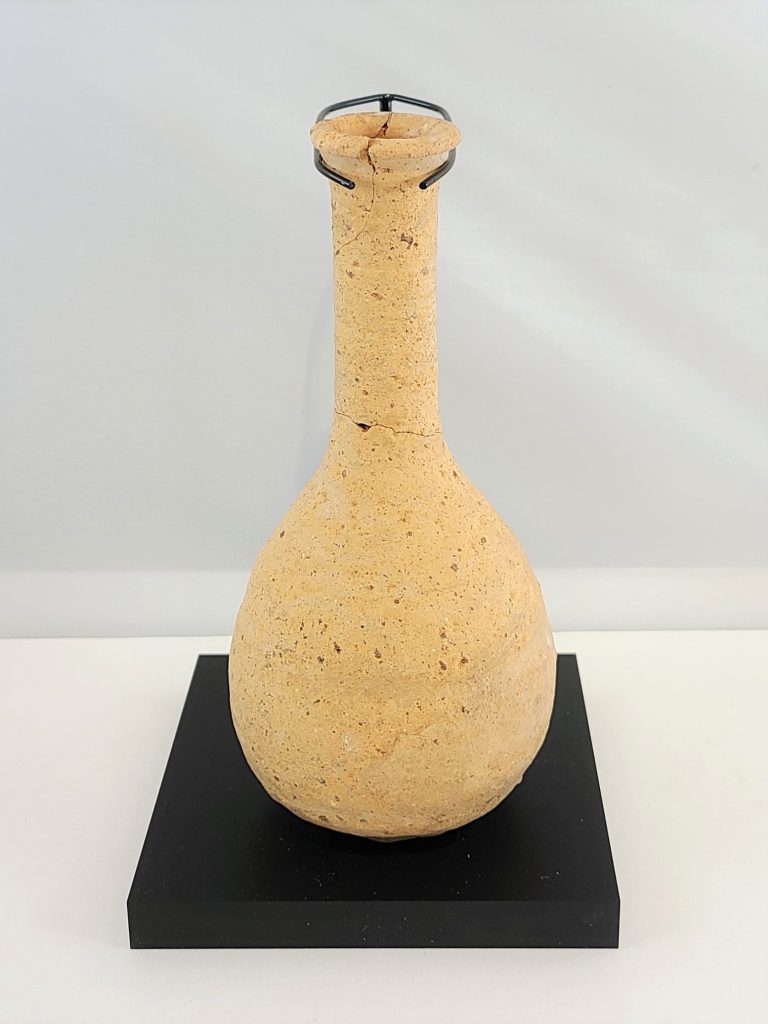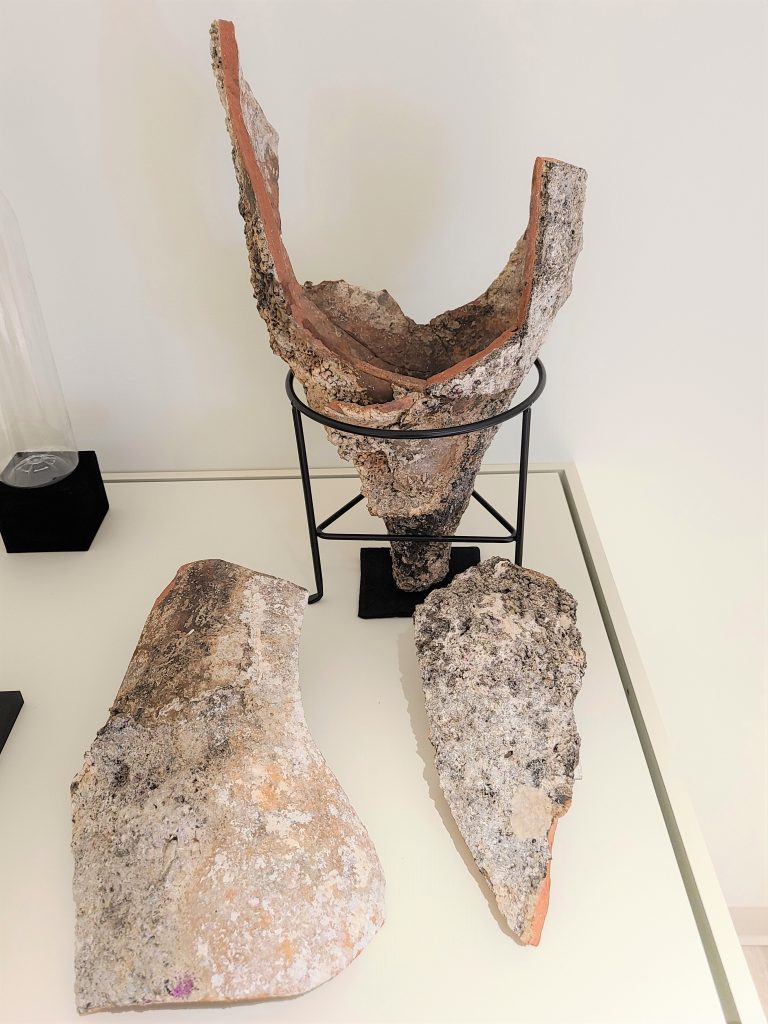Anonymous Objects
Sail out into the middle of the ocean, pick up a floating plastic bottle, and try to figure out where it came from. It’s not an easy task.
The modern world is full of anonymous objects that linger long after we’ve disposed of them, but usually we forget their stories as soon as they’re thrown away. But the brands, shapes, colors, and chemical compositions of plastics all tell stories about where objects came from, how they were used, and how they were valued.
The ancient world was similarly full of anonymous objects. Ceramics once fulfilled the same role that plastics do today, and archaeologists now can use them to reconstruct stories of past people’s lives.

Unguentarium
1st – 2nd c. CE
Two thousand years ago, pottery vessels were the mass-produced byproducts of an ancient international age not too different from our own. Like modern plastics, the cheap perfume bottles and oil lamps of the first century CE were small, plain, and unassuming. After being discarded, they lasted a very long time.

Amphora
ca. 1st c. BCE to 4th c. CE
This transport container sank to the bottom of the Adriatic sea in an ancient shipwreck. For over a thousand years it lay forgotten. The barnacles all over its surface attest to this long neglect. Now this piece of forgotten waste has new life as a museum artifact.
